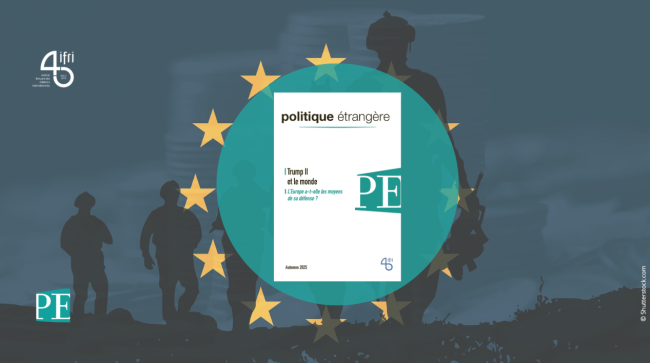East Asia Confronted with China

China is now an undeniable heavyweight on the international scene, wielding a remarkable range of political strategies. Studying its position in the surrounding area of Southeast Asia in relation to Japan, Korea, Taiwan, and the Association of Southeast Asian Nations (ASEAN) countries, as well as Australia, gives us an understanding of both the strength and the limits of such a diverse range of actions.

Military aggression in the China Seas, seduction by way of vaccines, economic control, investments wielded as tools of influence, attempts at political takeover, the marginalization of outside (i.e., Western) players in favor of organizations based within the region . . . anything goes in China’s bid to reinforce the centrality of its power in the face of states that are torn between their interests in neighboring countries and their desire for independence. The balance of power in Southeast Asia could well be symbolic of the world to come.
COVID-19 has not upset the geopolitical rationales at work across the world: the geography of vaccine distribution clearly shows it. This distribution, which broadly corresponds with the assertiveness of global powers in their respective zones of influence, reveals a geopolitics of immunity. On the other hand, the general consensus of those who have relied upon globalization up to now has been called into question, in particular with regard to the sustainability of public debt. How will they close the floodgates that were opened during the public funding crisis? Will the debts that were created therein be paid back, and if so, how?
This issue is available in French only.
CASE FILE
EASTERN ASIA CONFRONTED WITH CHINA
China/Japan: Redefining Coexistence, by Céline Pajon
China/South Korea: Mutual Frustration, by Antoine Bondaz
Beijing: Taiwan's Worst and Greatest Enemy, by Marc Julienne and John Seaman
China and South-East Asia: Has the Die Been Cast, by Sophie Boisseau du Rocher
Australian Resistance in response to China, by Nadège Rolland
COUNTER ANALYSIS
HOW TO DEAL WITH DEBT?
Is Public Debt a Problem?, by François Geerolf and Pierre Jacquet
Public Debt Outlook, by François Ecalle
CURRENT AFFAIRS
COVID-19: The Geopolitics of Herd Immunity, by Patrick Allard (In French only - COVID-19 : géopolitique de l'immunité collective)
How Can American Democracy Be Fixed?, by Laurence Nardon
BAROMETERS
Strait of Hormuz: The War of Nerves, by Morgan Paglia (In French only - Détroit d'Ormuz : la guerre des nerfs)
Dubai's Model Versus Abu Dhabi's Centralism, by Matthieu Etourneau
Are the two Koreas Perpetually Moving Towards Peace?, by Rémy Hémez
REFLECTIONS
Europe: Power and Finance, by Sylvie Goulard
BOOK REVIEWS
Toxic Politics: China’s Environmental Health Crisis and Its Challenge to the Chinese State, by Yanzhong Huang
China Goes Green : Coercive Environmentalism for a Troubled Planet, by Yifei Li et Judith Shapiro
By John Seaman
Download the full analysis
This page contains only a summary of our work. If you would like to have access to all the information from our research on the subject, you can download the full version in PDF format.
East Asia Confronted with China
Find out more
Discover all our analysesTrump II: The Clash of Ideologies
The second Trump administration brings together a number of very different, even opposing, ideologies: far-right populism, the reactionary Christian right, paleolibertarianism, and technolibertarianism. The most visible measures taken since Donald Trump's return to the White House have been populist in nature, with the president's authority strengthened, checks and balances weakened, a form of identity politics embraced, and economic nationalism implemented.
Europe Uncovered?
As Russia continues to threaten Europe, the Trump administration is making no secret of its desire to withdraw—at least partially—from the defense of the Old
Continent in order to focus on strategic competition with China. It is thus putting pressure on its European allies to increase their investment in the military sector. The NATO Summit in The Hague in June 2025 resulted in ambitious commitments by member states to increase their defense spending.
Trump II and Asia: The Wind is Picking Up…
The Indo-Pacific is a priority for the second Trump administration, which sees China as the United States' principal rival. However, Donald Trump began his second term in a rather disconcerting fashion by taking a harder line with Washington's traditional partners. He then provoked hostilities with Beijing, sparking a trade war even more intense than during his first term. The Chinese authorities have no intention of taking it lying down.

Trump II and the World / Politique étrangère, Vol. 90, No. 3, 2025
Does Trumpism exist? And if so, how can its ideology be characterized, given the myriad currents underpinning it—from populism and the Christian Right to paleolibertarianism and technolibertarianism? Does it embody a genuine worldview that informs its diplomatic actions? An obsessive drive to overturn long-standing practices, alliances, and commitments deemed “detrimental” to American interests, coupled with a fixation on transactional, one-off deals, appears to serve as its de facto strategy—hence the widespread weakening of allied ties. Observers are equally at a loss to discern an economic strategy, and above all reluctant to anticipate the possible outcomes of its contradictory maneuvers.









